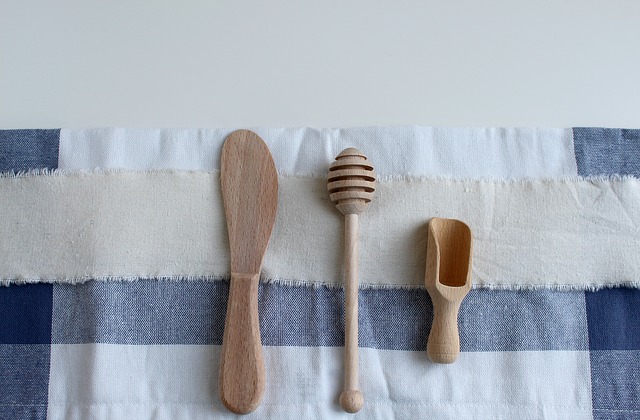The kitchen is a vital part of every home or apartment. The water flows, the meal is prepared, and the components are sliced in there at all times. Dishes and kitchen linens are essential, but they get dirty quickly.
The oil, fat, and natural colors of fruits and vegetables eat into the fabric, making it difficult, if not impossible, to remove from soiled towels.
Table of Contents
How To Keep Kitchen Towels Clean?
The topic of how to wash your kitchen towels clean will never occur if you follow a few easy dish towel fabric care principles and learn a few textile cleanliness secrets.
You may choose linen or waffle-weave towels for your kitchen.
Towels are now created from a variety of materials. Towels that are soft and luxurious to the touch can be purchased in a store.
On the other hand, Terry cloth is more suited to bathrooms than kitchens since it dries slowly and harbors a large number of germs in its fibers and folds. So, it’s advisable to stick with conventional canvas fabrics like linen towels or waffle weave dishtowels.
Towels should be changed regularly.
If this is the case, you should do it as frequently as possible. Every time a dishtowel is used, health experts recommend cleaning it.
White, natural, or colored-yarn towels are best.
Bleach and boil your kitchen towels at 95°C if they’re made of white cloth (203F). High heat shouldn’t be used to wash hand towels with painted patterns or fabric towels with brightly colored dyes dyed consistently. For them, a temperature of 40°C is ideal (104F).
However, if you’re going to splash out on a set of multicolored towels, be sure they’re made of yarn that will endure numerous washing. Pre-dyed thread is used to make the fabrics for these towels.
Towels Should Be Intended
Wipe tables, unclean floors, and sinks using cheap towels, not high-quality ones. To avoid injury, do not use them as potholders or oven mitts. You’ll get more usage from your towel if you use it as intended.
Disposable kitchen napkins or kitchen paper towels can save you time and keep your high-quality towels clean if you’re preparing a lavish supper.
Wrinkled towels are more likely to become soiled than those that are ironed.
To maintain the form and cleanliness of your towels, you must iron them after each use. In addition, a hot iron treatment further cleans the towels. As a result, if your favorite set of kitchen linens is soiled or ruined, it has to be washed thoroughly. There are several methods for removing oil and stains, such as using chemicals or improvised methods.
Keep Kitchen Towels From Being Soiled:
Towels like dishcloths and kitchen utensils are not part of the “normal” laundry. Kitchen towels, like cloth diapers, must be cleaned separately from other towels, such as jeans, t-shirts, and underwear.
Bacteria thrive in kitchen towels and dishcloths because they’re damp, typically curled up in a ball (to prevent drying out), frequently heated, and sometimes hidden away in a dark spot while waiting to be washed.
So, how should dishcloths and kitchen towels be cared for?
To maintain a spotless kitchen, consider the following ideas:
- When wiping countertops with raw meat, use a new dishcloth.
- From a simple stomachache to a life-threatening illness, food poisoning may strike anybody at any time.
- Dishcloths and kitchen towels should be washed in hot water on a normal period.
- Always wash in hot water.
- You’ll need to wash them on high heat if you own any of these. To get the most out of your detergent, wash your clothes in hot water after using them to wipe up milk or wash dirty dishes. Hot water merely aids in the dissolving and working of detergents. The mild process provides insufficient agitation to clean the clothes thoroughly.
- Towels and clothes for the kitchen should not be softened with fabric softener.
- Using fabric softener on kitchen towels is a bad idea since it might damage the fabric. In contact with the washing, liquid fabric softener leaves a filmy residue.
- Dishcloths should be rinsed well before being put in the washing machine to avoid getting stained.
- If you’ve washed your dishcloth in soapy water, you should expect it to retain a significant amount of the soap. A soapy dishcloth has soiled my machine on more than one occasion. Wear and tear and an excessively lengthy safety-type cycle are the results of causing the device to enter the SUD cycle. Rinse them well to avoid trouble.
- Before putting your dishcloths and kitchen towels in the laundry, let them air dry.
- Let them air dry overnight on the side of the sink, then put them in the wash the next day.
- The more dishcloths and towels you have, the more likely you will replace them frequently because there are so many to choose from!

